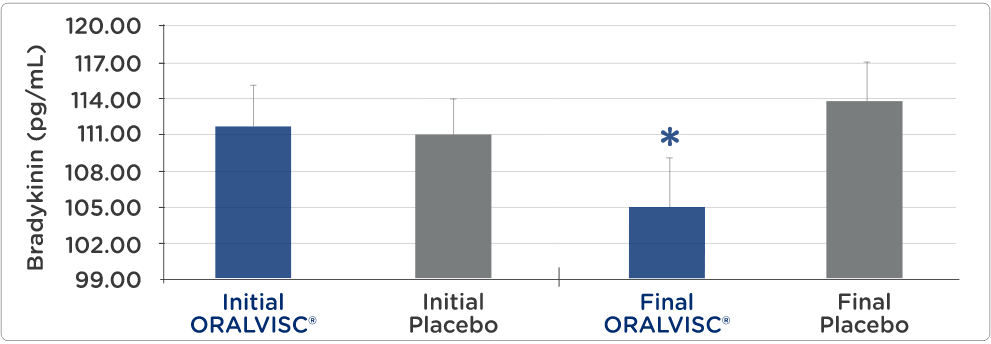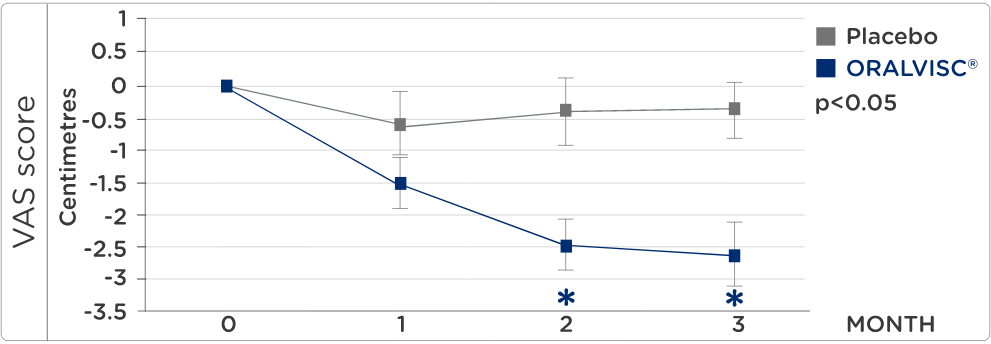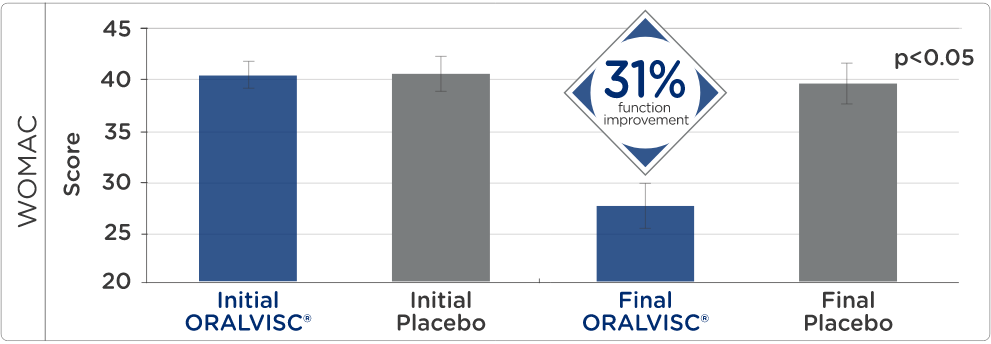ABOUT
ORALVISC®
Recommended Use
Oralvisc helps to reduce pain and improves joint function in osteoarthritis of the knee. Helps support joint health.
Recommended Dose Adults
One (1) capsule taken orally once daily for at least 2-3 months.
Consult a healthcare practitioner for use beyond 3 months
Cautions and Warnings
Store in a dry place at room temperature (15 C to 30 C).
Do not use if tamper evident seal is broken. Store away from children.
If you are pregnant or breastfeeding, consult a healthcare practitioner prior to use.
If symptoms worsen, consult a healthcare practitioner.
Contraindications
Not recommended for those who have hypersensitivity to avian proteins.
Not recommended for use in children and in pregnant women

HOW ORALVISC® WORKS
Clinically proven to help reduce pain and improve joint function in osteoarthritis of the knee.
Oralvisc helps with leptin reduction which reduces inflammation which in turn reduces joint discomfort and improves joint mobility.
ABOUT
OSTEOARTHRITIS
Osteoarthritis is a progressive disease of the whole joint and most commonly affects the joints of the hands, feet, hips, knees and spine, though almost any joint can be affected.
Osteoarthritis is a result of the body’s failed attempt to repair joint tissues that are damaged due to abnormal joint loading, joint injury and obesity.
FACTORS CAUSING JOINT PROBLEMS
Age
After the age of 45, 2 out of every 3 adults experience joint discomfort. This percentage increases with age.
Genetics
As with many other afflictions, joint problems have a genetic component.
Practicing high-intensity sport
High-intensity sport wears joints down from overuse.
Menopause
Hormonal changes (loss of estrogen) can cause inflammation resulting in joint pain.
Excess weight
The more overweight you are, the higher your chances of developing joint problems.
TIPS FOR KEEPING YOUR
JOINTS HEALTHY
Practice moderate exercise
Regular exercise helps to keep joints flexible.
Build up your muscle tone
Our muscles surround and protect our joints, so it is essential to build them up to avoid joint problems.
Follow a balanced diet
A diet rich in nutrients with fruits and vegetables and sources of antioxidants will help prevent tissues from rapid aging.
Watch your weight
Excessive weight damages joints and causes them to wear down.







